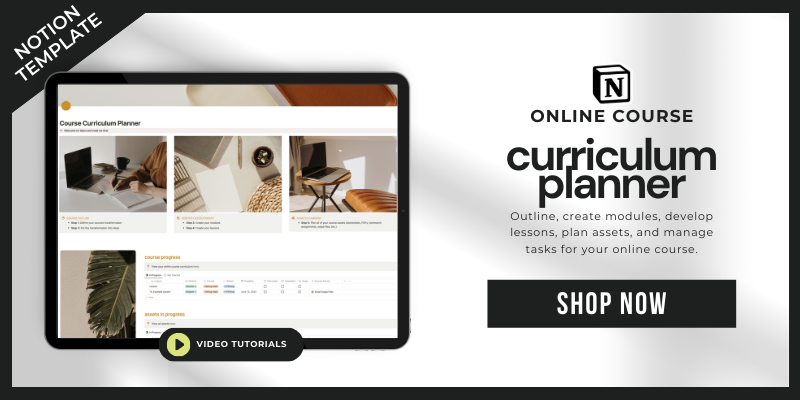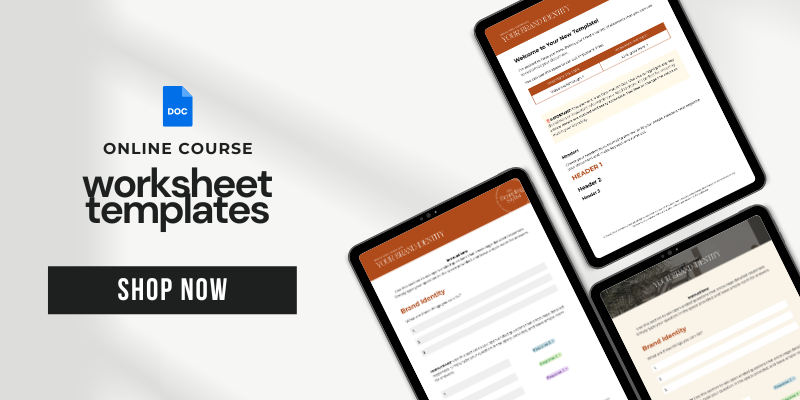Creating an online course is a big deal, but what really makes it shine is knowing how to structure your online course to ensure your students experience real, meaningful transformation. It’s not just about throwing everything you know at them; it’s about guiding them to achieve something they couldn’t before. This guide will show you how to structure your online course to keep your learners hooked, motivated, and seeing actual results from beginning to end.
1. Start with a Clear Course Outline
Define Your Objectives
Begin by clearly defining the learning objectives of your course. What should students be able to achieve by the end of the course? Think about these in logical steps. Point A to point B. Outline these objectives and steps from the very beginning to set clear expectations. Clear objectives ensure that your course is focused and delivers the promised transformation to your students, which is crucial in how to structure your online course.
A well-defined objective or transformation might be: “By the end of this course, students will be able to create a comprehensive digital marketing plan to boost their business online.”
Break Down Content into Modules
Divide your content into manageable modules or sections. Each module should cover a specific topic and build on the previous ones, creating a logical flow. Structuring your course into modules helps students focus on one topic at a time. We don’t want to overwhelm them with too much content at one time.
Example Outline:
- Introduction
- Welcome Message
- Course Objectives
- Overview of the Course Structure
- Module 1: Basics
- Lesson 1: Introduction to the Basics
- Lesson 2: Fundamental Concepts
- Assignment
- Module 2: Intermediate
- Lesson 1: Intermediate Techniques
- Assignment
- Resource downloads
- Module 3: Advanced
- Lesson 1: Advanced Strategies
- Lesson 2: Application in Real-world Scenarios
- Resource downloads

2. Create Engaging and Varied Content
Mix Different Content Types
Incorporate a variety of content types to cater to different learning styles. Use videos, text, interactive quizzes (if the platform allows), and downloadable resources to keep the material engaging. Different content types ensure that students remain interested and can absorb the material in various ways.
→ Example of a quiz via Thinkific
Interactive Elements
Interactive elements such as quizzes and discussion forums can significantly boost engagement, especially in group programs. These elements encourage active participation rather than passive consumption of information. Having active participation is crucial for achieving transformation, as students are able to apply what they’ve learned immediately.
3. Implement Interactive and Practical Activities for Better Results
Assignments
Regular assignments help reinforce the material and provide opportunities to write out notes. Ensure that these activities are aligned with your learning objectives. Don’t just make assignments that don’t make sense.
Group Activities
If you have a cohort-style course, group projects or peer-review activities really do foster collaboration and learning. This not only enhances understanding but also builds a sense of community. Collaboration can lead to deeper insights and more significant transformations as students learn from each other. Can this work for courses or programs that aren’t cohort-style? Absolutely! You’ll just need to implement other ways for enrolled students to connect.

4. Provide Continuous Feedback to Guide Student Progress
Timely Feedback
Students love to get feedback. Trust me when I say this really does encourage them. Now if this is an evergreen course where you may not be present, this won’t always be possible. But when it is possible, give timely and constructive feedback on assignments. Another option is to give feedback on quizzes. All of this helps students understand their progress and areas for improvement, which is essential for the transformation.
Live Q&A Sessions
Regular live Q&A sessions can address students’ questions in real-time, provide deeper insights, and keep them engaged with the course content. These sessions, which typically last for an hour, also allow for immediate clarification and deeper understanding, thus facilitating that quicker transformation.
5. Ensure a Smooth User Experience to Maintain Engagement
Easy Navigation
You may be thinking, “why does this matter?” Because when people can’t figure out how to work something, they’ll often just say, “nevermind” and abandon it. So make sure your course platform is user-friendly with easy navigation. Students should be able to find the materials they need without any hassle. I like to include a “How to Use This Course” lesson that shows students how to access material and navigate the course platform.
Mobile Accessibility
Optimize the mobile site if your course platform has one! Some of your students may be busy and prefer to take your course on-the-go, and mobile accessibility can help enhance their learning experience.
Technical Support
Please provide technical support to handle any issues students might encounter. This can be as simple as ensuring they know who to email if they encounter technical problems. Be sure to promptly respond to these so you do not disrupt their learning.
6. Regularly Update Course Content for Ongoing Relevance
Keep Content Current
Things in your industry will likely change. Your knowledge will likely change. Regularly update your course content to keep it relevant. Incorporate the latest research, trends, and technologies in your field. Up-to-date content ensures that students are learning the most current information. Just remember: if the platform is updated, update that walkthrough video you filmed!
Feedback Integration
Actively seek and integrate feedback from students to improve the course. This shows that you value their input and are committed to providing the best learning experience. I’ve met with cohort students once the program ended to get feedback on the flow and how they felt about their transformation. Integrating this feedback helped me further tailor the course and my messaging to better meet student needs, enhancing their transformation.
Conclusion
Knowing how to structure your online course effectively is crucial for maximizing student engagement and ensuring they achieve the promised transformation. By clearly outlining your course, incorporating varied content, fostering a community, providing feedback, ensuring a smooth user experience, and regularly updating the content, you can create a really dope course. And you know what happens when you do this? Profits!
Need help structuring your online course or program, check out my done-for-you video editing packages.